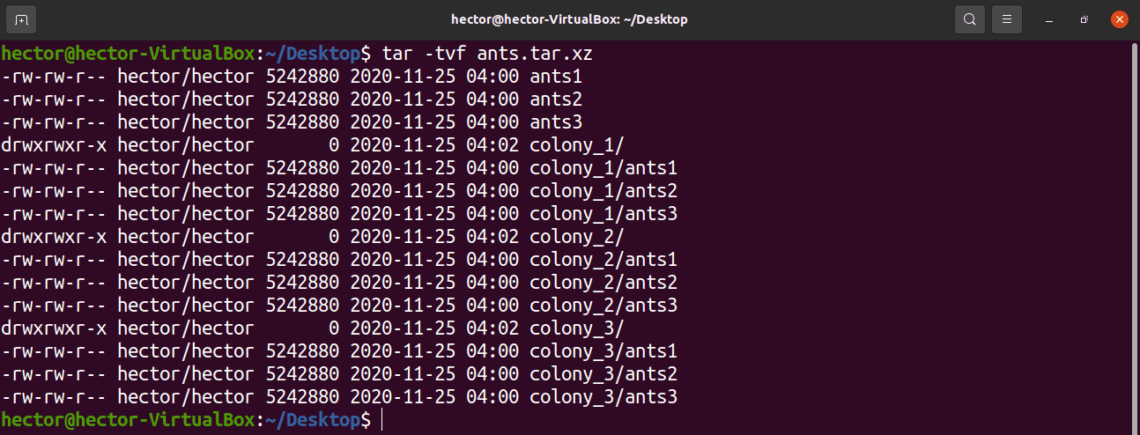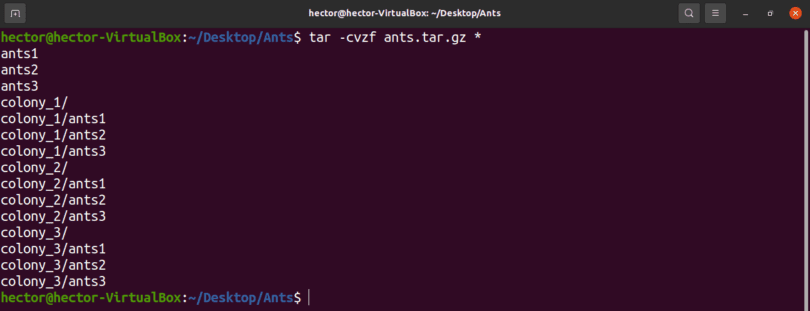

When extracting files, you must provide their exact names including the path, as printed by -list ( -t).Įxtracting one or more directories from an archive is the same as extracting files: tar -xf dir1 dir2 To extract a specific file(s) from a tar.gz file, append a space-separated list of file names to be extracted after the archive name: tar -xf file1 file2 Use the -directory ( -C) to extract archive files in a specific directory:įor example, to extract the archive contents to the /home/linuxize/files directory, you can use: tar -xf -C /home/linuxize/files Extracting Specific Files from a tar.gz File # tar -xvf īy default, tar will extract the archive contents in the current working directory The -v option will make the tar command more visible and print the names of the files being extracted on the terminal.
Untar gzip windows#
Windows users will need a tool named 7zip To extract (unzip) a tar.gz file simply right-click on the file you want to extract and select “Extract”. If you are a Desktop user and the command-line is not your thing you can use your File manager. The same command can be used to extract tar archives compressed with other algorithms such as. The tar command will auto-detect compression type and will extract the archive. To extract a tar.gz file, use the -extract ( -x) option and specify the archive file name after the f option: tar -xf Most Linux distributions and macOS comes with tar command pre-installed by default.
Untar gzip how to#
In this tutorial, we will show you how to extract (or unzip) tar.gz and tgz archives. The tar command can also be used to extract tar archives, display a list of the files included in the archive, add additional files to an existing archive, as well as various other kinds of operations. By convention, the name of a tar archive compressed with gzip should end with either. Is the most popular algorithm for compressing tar files. Tar was originally designed for creating archives to store files on magnetic tape which is why it has its name “ Tape ARchive”. It supports a vast range of compression programs such as gzip, bzip2, lzip, lzma, lzop, xz and compress. The tar command is used to create tar archives by converting a group of files into an archive.
Untar gzip download#
Open-source packages are generally available to download in. If you are roaming the open-source world, chances are you encounter.

PowerShell doesn’t support gzip as far as I found, but we can make use of the. Start-BitsTransfer -Source "" -Destination "c:\temp\maxmind\" The BitsTransfer cmdlet if available is really fast at downloading” Import-Module BitsTransfer New-Item -ItemType directory -Path C:\temp\maxmind\

There’s a good comparison on popular compression algorithms worth checking out: Gzip is a compression algorithm, and is based on the DEFLATE algorithm, which is a combination of LZ77 and Huffman coding. In PowerShell v5+ we have the Expand-Archive command: Expand-Archive c:\a.zip -DestinationPath c:\a But only to find that PowerShell doesn’t make this quite trivial. We found ourselves with a requirement to download an updated version of a public dataset on a regular basis, so PowerShell + windows scheduler came to mind, since the application runs in a windows environment.


 0 kommentar(er)
0 kommentar(er)
